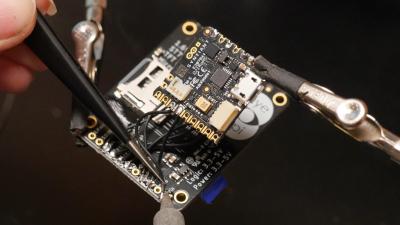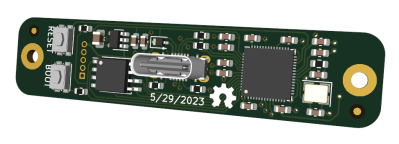When you help your bumbling Uncle Gadget with all kinds of missions, you definitely need a watch that can do it all. Penny’s video watch from Inspector Gadget has a ton of features including video communication with Brain and Chief Quimby, a laser, a magnet, a flashlight, a sonar signal, and much more.
 To round out her Penny costume, [Becky Stern] has created a 3D printed version of Penny’s incredibly smart watch. It listens for Penny’s iconic phrase — come in, Brain! — and then loads a new picture of Brain on the rounded rectangle TFT display. Inside the watch is an Arduino Nicla Voice, which has to be one of the tinier machine learning-capable boards out there.
To round out her Penny costume, [Becky Stern] has created a 3D printed version of Penny’s incredibly smart watch. It listens for Penny’s iconic phrase — come in, Brain! — and then loads a new picture of Brain on the rounded rectangle TFT display. Inside the watch is an Arduino Nicla Voice, which has to be one of the tinier machine learning-capable boards out there.
[Becky] created the watch case in Tinkercad and modified a watch band from Printables to fit her wrist. With such a small enclosure to work with, [Becky] ended up using that really flexible 30 AWG silicone-jacketed wire for all the fiddly connections between the Arduino and the screen.
After getting it all wired up to test, she found that the screen was broken, either from pressing it into the enclosure, or having a too-close encounter with a helping hands. Let that be a lesson to you, and check out the build video after the break.
More interested in Uncle Gadget’s goodies? Check out these go-go-Gadget shoes and this propeller backpack for skiers.
Continue reading “Building Penny’s Computer Watch From Inspector Gadget“






















